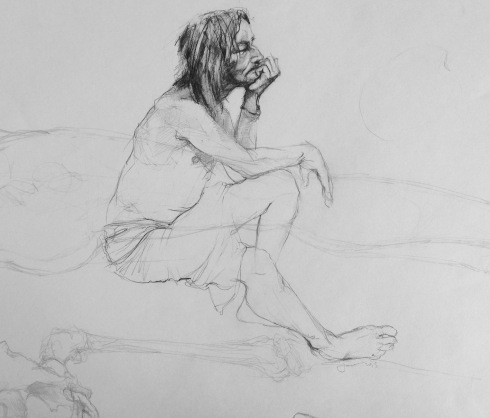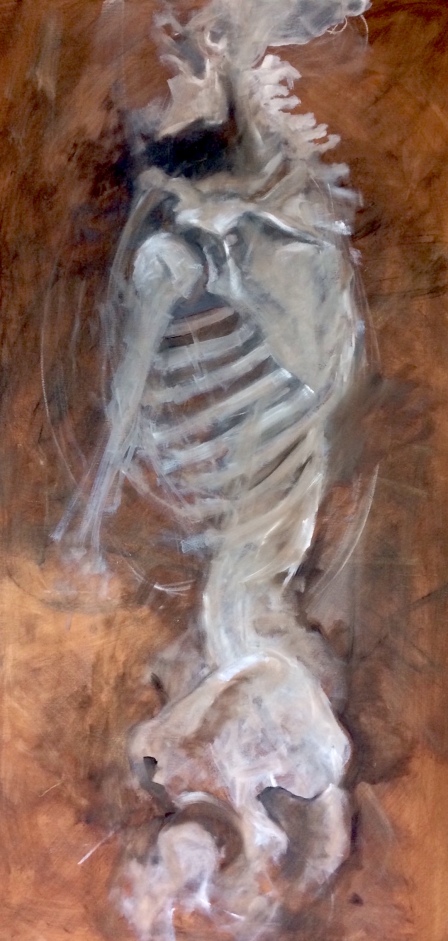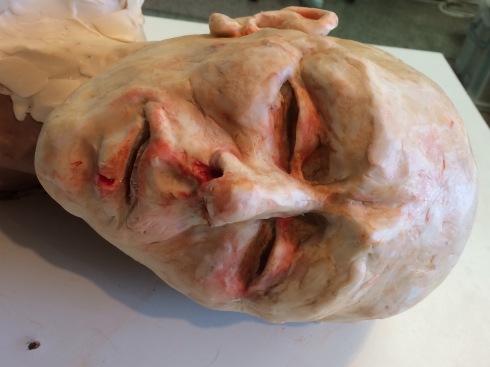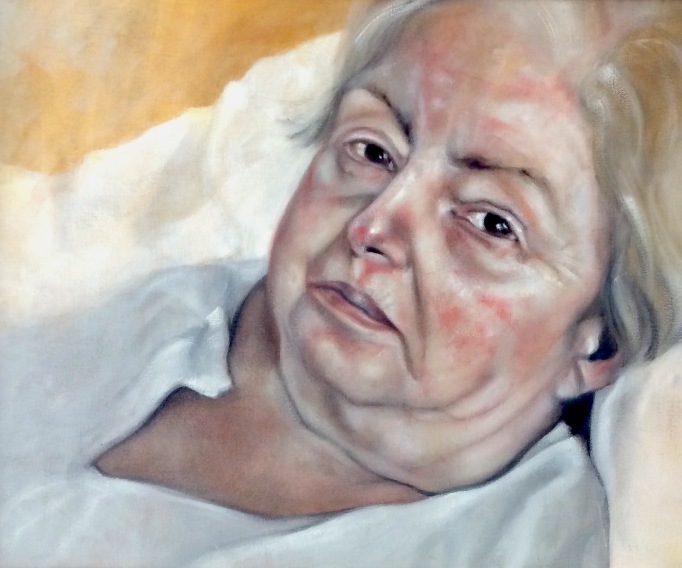You are currently browsing the tag archive for the ‘philosophy’ tag.
I am privileged to have permission from a friend and current Atelier student of mine to repost here his own recent blogpost. A gifted art educator in his own right, he eloquently expresses the ‘heart and soul’ of the practice of drawing from the live model, along with the regrettable ambivalence that pervades students’ access to such opportunities across our UK university system. The Broadway Drawing School in Cardiff is an independent art school where the heart beats strongly and the soul breathes, and where we consider such ambivalence an anathema.
The drawing is mine. The words are his.

Extracts from a letter ‘concerning life drawing’
… ‘I’ve been life drawing since 1993, teaching it for 20 years, and been involved in decisions regarding accommodation for most of that time. It has allowed me a degree of perspective, time to question the practice, and also time to observe the personalities and cultures of the schools, faculties and institutions who’ve employed me in this capacity. For the outsider, it may appear to be an obscure, anachronistic, or opaque method for teaching in a world that is increasingly concerned with technological novelty, and with forms of education that are grounded in quantitative resolution.’
‘There have been periods in education where life drawing has fallen foul of fashion. The foundation course was born in the UK out of the Basic Design movement, which in turn drew heavily on the original Foundation course – the introductory year at the Bauhaus. Priority here was essentially non-figurative, addressing the essential qualities of colour, shape, form, texture and inherent materiality. Many UK art schools in the 60’s, gave life drawing a wide berth. If you look at the specification for the foundation course today, there is no mention of life drawing, although drawing from live experience, as an experimental process, covers the entire first semester. There isn’t a single art school of any quality, in the western world today, who would consider operating a foundation course, or any course of drawing, without life drawing. Life drawing, in observing the nude human form in space, can address every aspect of drawing. Line, tone, colour, texture, space, compositional design, description of form, division and arrangement of picture space, kinetics, spatial tensions and dynamics. There is a lifetime of study to understand the human form itself. Anatomy, balance, movement, weight, proprioception, stillness, the effects of time, gravity, and the relationship of each of these to historical and philosophical canon. Its relevance to human centred design practice, from fashion, animation or furniture design is unquestionable.
Quality here, is a key distinction. It underpins all questions related to teaching and delivery of life drawing, at every stage of the process. It is a distinction that many are happy to avoid, because teaching life drawing is often inconvenient in many ways. It requires time. Time out of a curriculum for which it is often seen as a supplementary practice. It requires time to learn. Its not an instant fix. The more you do it, the more you realise how much you have to learn. This means also that you need experienced staff. It requires space – a simple, large room, which is not a studio that is otherwise in daily use (meaning that all staff can access the room efficiently), in the same way that sportsmen access a gym. A suitable analogy. The room needs easels, furniture for the model, somewhere set aside for changing, adjustable heat, adjustable lighting, and a floor that can receive ink, paint or similar without hindering practice.
In his preface to Richer’s anatomy, Beverley Hale describes something close to the heart of life drawing as a learning process. He points out that when confronted with a model, the student draws upon an image of the figure which is held in the mind, as a means of dealing with what he perceives. The nature of the figure in the mind, dictates the success of the drawing. In simple terms there is a correlation between assumption of knowledge in the student and pitfalls fallen into within the drawing. Making a life drawing is a significant feat. The students enters a space and must confront the model, taking what they believe they know with them. They must then undergo an examination of perception, and on the surface of a blank page, translate the conversation between perception, knowledge, assumption and correction, through their own body, and the medium of their ability and familiarity with tools and materials. The evidence is present, visual, and unforgiving. Life drawing is a philosophical endeavour, as much as it is a practical one, asking the student to pass through an unsuccessful model of understanding, in the hope of briefly glimpsing a better one. This is true of every student in every life class, in every drawing, at every stage of development. Osi Rhys Osmond equated it to asking the student to become a better person. It is a microcosm of teaching and learning, based on a question that can never be answered. As such it is a process that must be considered continuous, and any desire to reduce the practice to the requirements of a module, has missed the point of it entirely. Pirsig discusses the first and second university – the first made of students and teachers, the second as a business/political model. There is obvious interdependence between both, but as a rapidly aging practitioner from the first, it’s my responsibility, sometimes, to communicate with the second…’
‘Economically, demographically, we’re in different circumstances to those we enjoyed in the mid 1990’s. The neoliberal project has put education under the yoke of private debt creation, driving higher level providers to drop all pretence of quality in pursuit of a rising bottom line. It’s a balloon that will burst in the next five years, as the ideological ravages of compulsory and further education, devastate choice in the pursuit of statistical accounting. When the second university remakes the first in its own image, the unanswerable question of the white sheet of paper in the life room, looks increasingly anomalous.’
‘As educators, we want to be better people. We want to face the unanswerable question, which is, ‘what do you know’ and also ‘prove it then’. There’s a danger… that there’s less space to ask the question…We need, in all things we do, quality rather than expediency. In a shrinking market… our only selling point is excellence. We have it. To preserve it, looking ahead, it might mean doing less, but doing it properly.’
‘I’m off now, to resume my own life drawing studies. Still hoping to be a better person.’
I’m delighted to have an illustrated article, Jac Saorsa: artist in medicine just published (October 4th) by Taylor & Francis in the Journal of Visual Communication in Medicine, online. The article will also be published in print form in the latest issue of the journal. Here is the link to find it online….
Here is the first post on a new blog that I have started today. the bog is entitled The Loneliness of a Long Distance Anatomy Student and you can find it here: The Loneliness of the Long Distance Anatomy Student
As always, all comments/feedback for any of my posts are very welcome!
Today I am beginning a PG Anatomical Sciences Online Distance Learning program with the University of Edinburgh. I have decided to launch myself into this because, although as a classically trained artist I have a grounding in superficial musculo-skeletal anatomy, this is not enough for me! I want to go further, deeper, and bury my subjective, qualitative and humanist mind into the fertile soil of the objective, quantitative and scientific field to find out what will grow from such a symbiosis. The seed has already been sown by my explorations into anatomical details in dissection labs both here and in the USA, and through my teaching anatomical form and function to other artists who hunger to understand what lies beneath the surface. But now, ‘subcutaneous’ knowledge must give way to a more thorough comprehension and for that I need what can often be an anathema to an artist…I need structure and discipline!

This blog then will become a repository for my thoughts and for my feelings, for my frustrations (which I am sure will become close companions) and my joys (of which I hope there will be some!) throughout the process. I hope that the posts I will offer here will be of interest to artists and to scientists alike because ultimately I am convinced that both need each other just as flesh needs bone.
I am quietly excited.





